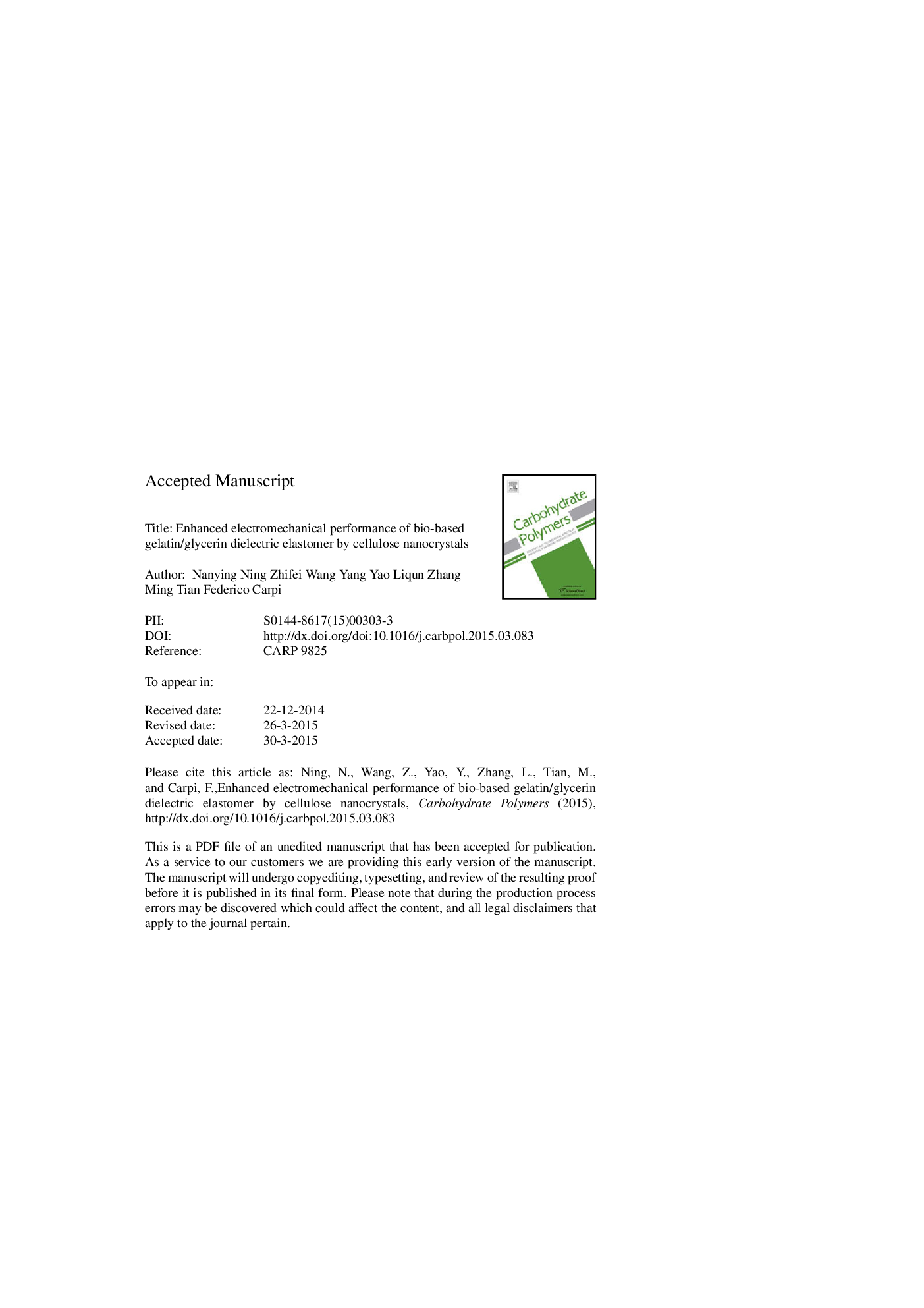| Article ID | Journal | Published Year | Pages | File Type |
|---|---|---|---|---|
| 7788114 | Carbohydrate Polymers | 2015 | 24 Pages |
Abstract
To meet the growing demand of environmental protection and resource saving, it is imperative to explore bio-based elastomers as next-generation dielectric elastomers (DEs). In this study, we used a bio-based gelatin/glycerin (GG) elastomer as the DE matrix because GG exhibits high dielectric constant (Ér). Cellulose nanocrystals (CNCs), extracted from natural cellulose fibers, were used to improve the mechanical strength of GG elastomer. The results showed that CNCs with a large number of hydroxyl groups disrupted the hydrogen bonds between gelatin molecules and formed new stronger hydrogen bonds with gelatin molecules. A good interfacial adhesion between CNCs and GG was formed, and thus a good dispersion of CNCs in GG matrix was obtained, leading to the improved mechanical strength of GG. More interestingly, the Ér of GG elastomer was obviously increased by adding 5Â wt% of CNCs, ascribed to the increase in the polarizability of gelatin chains caused by the disruption of hydrogen bonds of gelatin. As a result, a 230% increase in the actuated strain at low electric field of GG was obtained by adding 5Â wt% of CNCs. Since CNCs, gelatin and glycerol are all bio-based, this study offers a new method to prepare high performance DE for its application in biological and medical fields.
Related Topics
Physical Sciences and Engineering
Chemistry
Organic Chemistry
Authors
Nanying Ning, Zhifei Wang, Yang Yao, Liqun Zhang, Ming Tian,
